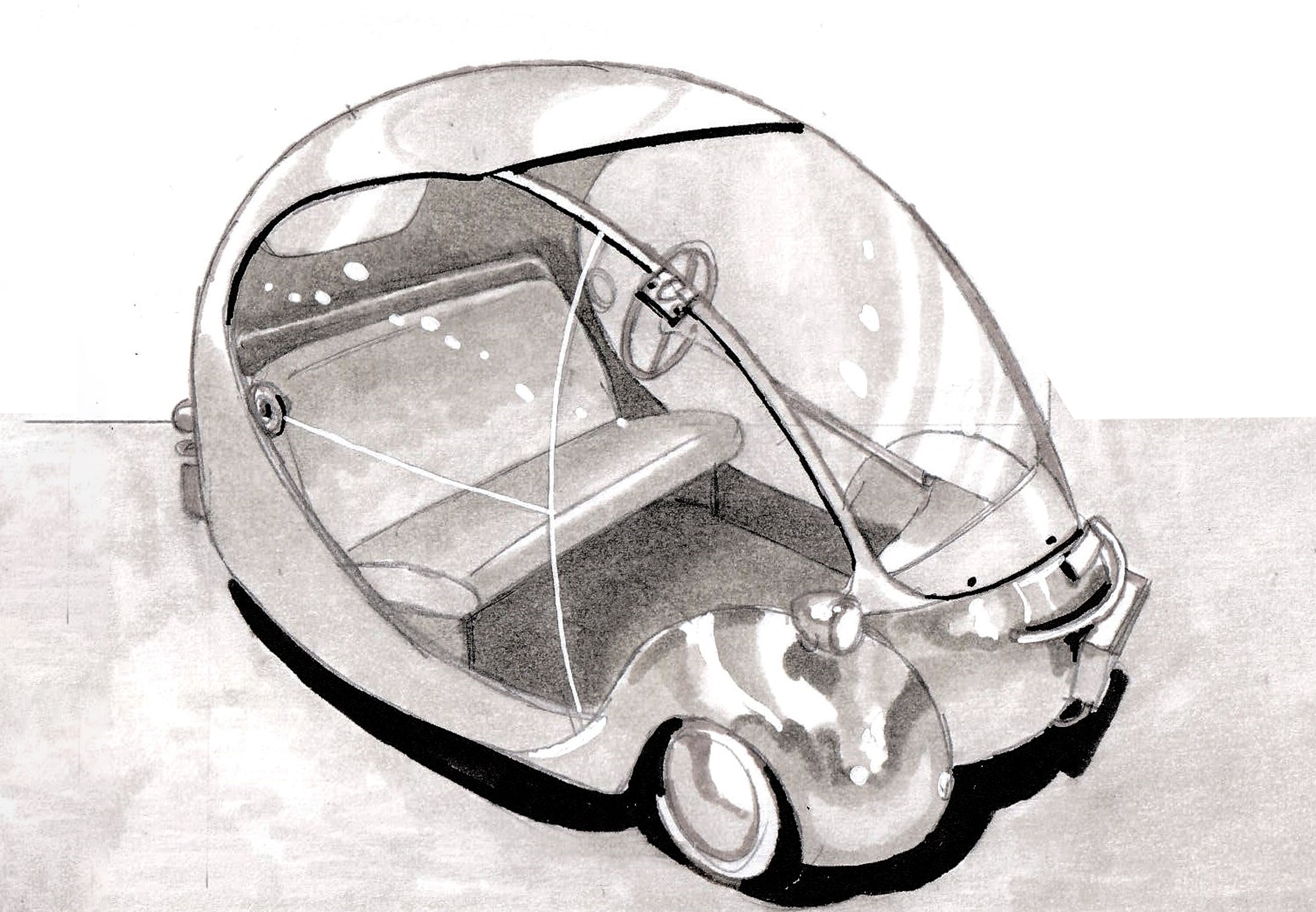Absolute opposites
With the valuable support, depth of knowledge and illustrative talent of Prof. Massimo Grandi
Photo credit: Some images are taken from the book Asi Service "Quando le disegnava il vento" by Massimo Grandi
Those blessed with genius are always ahead of the field, often too much, but they tend to drag the rest in their wake. Take Paul Arzens, for example, who, in 1938, as a young Parisian artist, built a spectacular roadster on a Buick chassis.

The car was over seven meters long. Given its size, the shape of its nose, and its color, its name was absolutely perfect: “La Baleine“ (the Whale). When people asked him why the car was so long, he would reply that he needed a roomy trunk to take all his art equipment whenever he wanted to paint outdoors. Perfectly rational!

Arzens’ rational approach was also clear from two other prototypes he built, absolute opposites of each other, but both avant garde. One was his electric Baleine, very large like the roadster, but built on a Fiat chassis, which carried something like a ton of batteries that allowed it to cover up to 200 kilometers, and the other, entirely different, was his “Oeuf Electrique” (Electric Egg), a microcar that foreshadowed the best concepts we see today. This three-wheeled “Egg”, with its rear driving wheel, combined the lightness of a cradle-like aluminum chassis with the novelty (for the times) of Plexiglas for its large transparent surfaces.

Both the Buick La Baleine and the Oeuf Electrique (which, immediately after the war, Arzens transformed by giving it a 125cc two-stroke engine) are exhibited at the Cité de l’Automobile museum in Mulhouse. While Arzens really only used his Baleine as a provocative divertissement, he continued driving his “Egg” around Paris until 1990, the year of his death. A true genius!

Aerodynamically and esthetically, both these concepts boast strong features: the “Egg” is basically a large drop, devoid of any element capable of impeding its motion. The Baleine, on the other hand, is a 1930s forerunner of the style shown by postwar luxury cars. Its long linear profile and the bow that characterizes its front are very beautiful and functional, the latter recalling a whale’s mouth, while its “depressed” fender area seem to lower the front end. The wraparound windshield, also in Plexiglas, is a great design feature that anticipates post-war American windshields.
